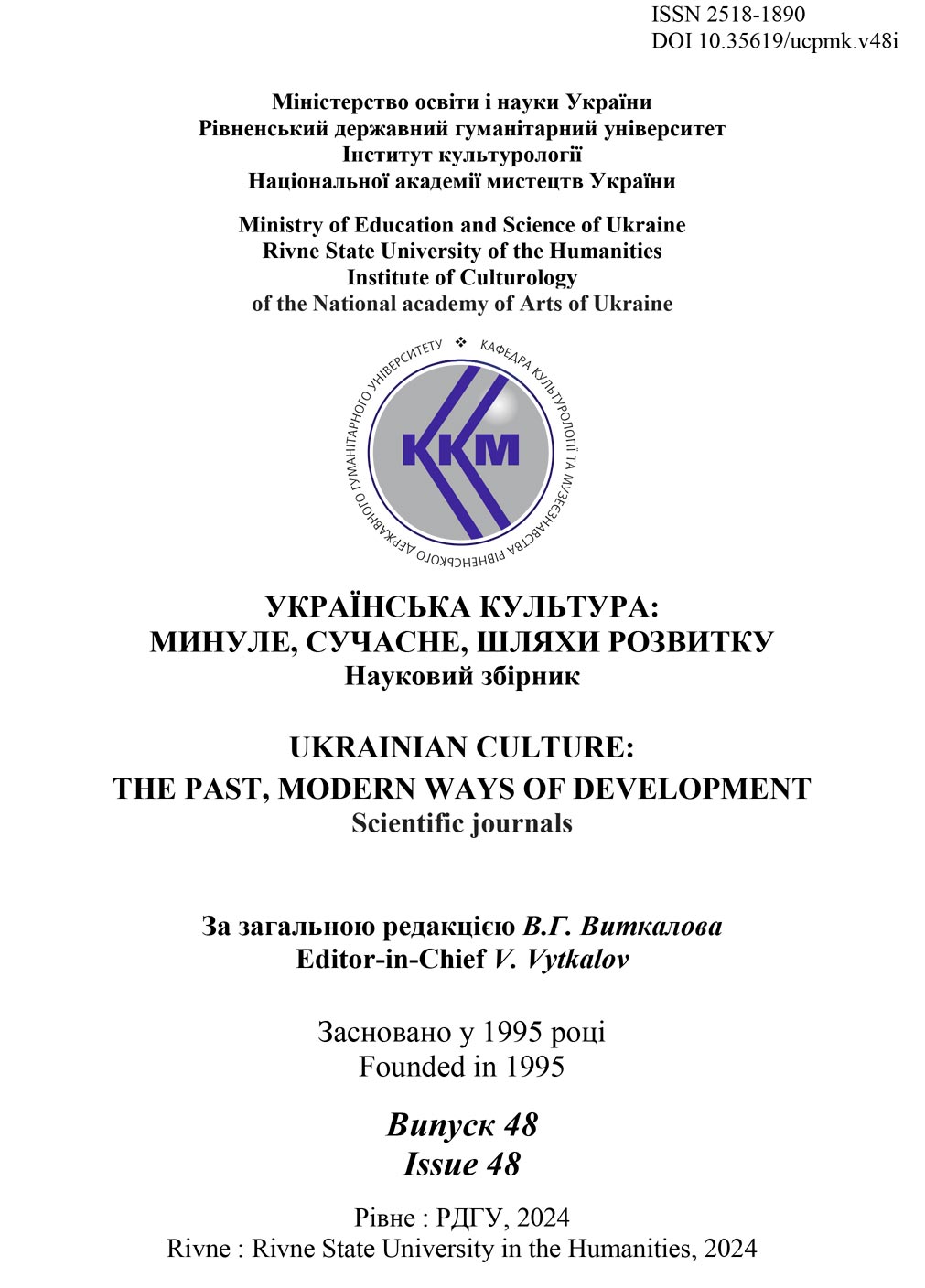MORPHOLOGY AND SEMANTIC INTERPRETATION OF TRIPIL CERAMIC IDIOPHONES OF OVAL ELONGATED AND ANTHROPOMORPHIC FORM
DOI:
https://doi.org/10.35619/ucpmk.v48i.744Keywords:
idiophones, kalathaltsia, Hornbostel-Sachs classification, musical archeology, Tryplian civilization.Abstract
The aimof paper – to find out the origin of the oval-elongated rattles of the early stage of Trypyllia, as well as to carry out a semantic interpretation of the ornamentofthe amphora-like rattle of the middle stage of Trypyllia and the anthropomorphic vessel-shaped rattles of its late stage, and to show their connection with the image of the Mother Goddess.
Research methodology. The paper uses combined archaeological and organological research methods.
Results. The symbolism of the shapes and ornaments of ceramic rattles in the form of grain and an anthropomorphic vessel gives every reason to assert that this noisy instrument could not have been a simple children's toy, as researchers believe [8; 156–157]. An important criterion for identifying them as objects of not utilitarian (children's toys) but ritual
purpose is the context of their findings in complexes that researchers define as sacred (Luka-Vrublivetska, Klishchiv) and among funerary objects (Vykhvatyntsi).
Novetly. The origin of the prototype of the oval-elongated shape of the kalatalets was established from the grain of durum wheat, which was one of the main crops in the economy of Trypilians. The archaeological context of the finding of a rattle in the sanctuary testifies to the ritual functions of this idiophone in the ritual practice of the population of the early stage
of Tryplian culture. Based on the proposed semantic interpretation of the amphora-shaped rattle and the ornament applied to it, it was possible to interpret it as an anthropomorphic embodiment of the Mother Goddess, who gave life and ensured rebirth after death. The method of extracting sound by shaking the instrument, as a result of which the balls rub against the walls, was perceived as an act of creation, the birth of a new life, which was given by the Mother Goddess embodied in the anthropomorphic outline of the forms of the rattle.
The practical significance. The paper materials can be used in research on the musical and instrumental culture of the ancient peoples of the world.




